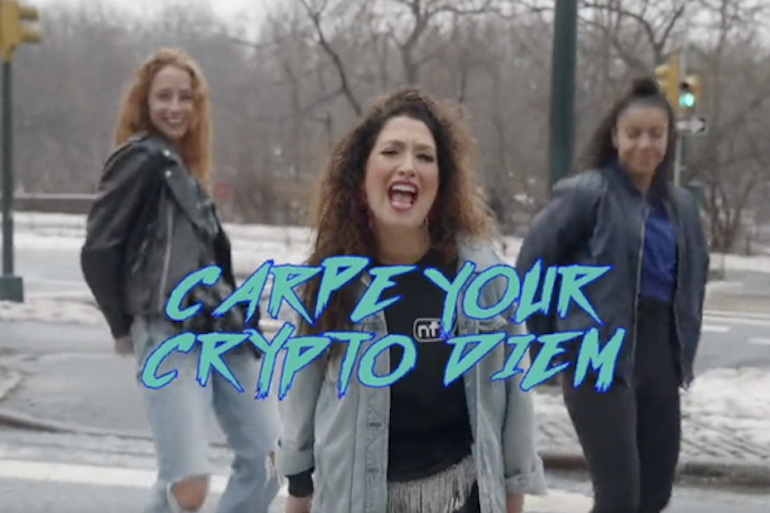If you spend any time among the cryptocurrency community you’ll come across the mantra “HODL”. Originally a typo for “hold” on a Bitcoin forum, it has become all-purpose advice to anyone looking at the day’s price fluctuations and thinking of selling their assets.
To HODL is to trust the process and keep your eyes on the long term. In Australia, we are mid-way through a process of creating rules for crypto assets that will provide some certainty for this growing industry.
Though it was begun by the previous government, it’s a bipartisan process and the new government can have faith in it. HODLing to the current course will protect consumers and give Australian businesses the certainty to keep innovating.
Clearing up the grey zone
More than a million Australians have invested in cryptocurrency. However, these assets currently exist in a regulatory grey zone.
Is a crypto asset a security, a derivative, a non-cash payment facility, a managed investment scheme – or something else? Lawyers will tell you, “it depends”.
This regulatory uncertainty is pushing businesses and talented individuals to go overseas. I have seen this myself in my work as a lawyer and an academic in an industry-engaged research centre.
But don’t just take my word for it. Australia’s National Blockchain Roadmap, published in 2020 by the Department of Industry, says
a regulatory environment that is conducive to innovation and growth is essential for Australia to take advantage of the blockchain opportunities available – including international investment opportunities.
The Australian Securities and Investment Commission and the Australian Tax Office have each issued some guidance, but it is Parliament that must colour in the rules through legislation.
An orderly process
In the previous Parliament, the Senate Select Committee into Australia as a Technology and Financial Centre was convened for this purpose. The committee was chaired by Liberal senator Andrew Bragg, but its membership also included Labor senators Marielle Smith and Jess Walsh.
In October 2021, the committee handed down its final report with 12 bipartisan recommendations for changes to various rules around new financial technologies. If implemented, this will deliver regulatory certainty for crypto asset businesses. It will also provide a range of consumer protections.
In December 2021, then-Treasurer Josh Frydenberg endorsed or noted 11 of the 12 recommendations. The Department of Treasury, the Board of Taxation, and the Council of Financial Regulators were tasked with developing the various details.
In 2022, that work is already well underway. For instance, in March 2022 Treasury released its consultation paper on licensing and custody requirements for crypto asset secondary service providers. Feedback has landed in Treasury’s inbox over the past few weeks.
Stakeholders have engaged in this regulatory reform process in good faith.
The orderly process in Australia is in contrast to the messy state of affairs in the US. In 2021, the US Congress saw 35 separate and competing bills and resolutions introduced, dealing with various aspects of crypto regulation.
Some of those bills have bipartisan sponsorship, such as the one proposed by US Senators Kirsten Gillibrand (Democrat – New York) and Cynthia Lummis (Republican – Wyoming) released on Tuesday (Wednesday AEST). But there is still no mechanism to achieve consensus.
Regulations will help clean up scams and protect consumers
Labor did not take a comprehensive policy on cryptocurrency regulation to the recent federal election.
It is likely the regulations will be carried by the newly minted minister for financial services, Stephen Jones. Jones has warned in the past that cryptocurrency is a “massive loophole for money laundering” and likened investing in crypto assets to “swimming outside the flags.” Labor members of the senate committee have also expressed concern about cryptocurrency-based scams and the need for enhanced consumer protections.
New federal police data shows cryptocurrency scams have exploded by 172% over the past year – but Josh Frydenberg is doing nothing about it.
Crypto investors need certainty, and criminal platforms need to be taken offline. @amy_bainbridge @FinancialReviewhttps://t.co/jweRmzspqB— Stephen Jones MP (@StephenJonesMP) December 7, 2021
These are legitimate issues. The Treasury Department’s current proposal already addresses them, in three ways.
First, licensing will be required for secondary service providers such as digital currency exchanges, cryptocurrency brokers, custody management businesses, and NFT market operators. This provides regulatory certainty to industry and provides consumers with a clear signal about who the legitimate operators are.
Importantly, limiting licensing to secondary providers ensures that primary developers can continue to build innovative crypto projects.
Second, licensed companies will have to follow new rules. Proposed rules include enhanced obligations to comply with anti-money laundering laws, along with requirements to prevent fraudulent scams and providing avenues for dispute resolution.
Third, licensing with come with liquidity requirements or an obligation to hold crypto assets held on trust for consumers. This aims to prevent the situation where a digital currency exchange goes bust – such as MyCryptoWallet in 2021 – and leaves consumers as unsecured creditors with no recourse.
Further, cybersecurity standards will guard against theft from digital currency exchanges – such as the BitMark hack in 2021.
No going back
There is certainly space for the Labor government to put its own stamp on the legislation. Further measures around consumer education targeted at preventing cryptocurrency-based scams, or better enabling consumers to obtain due diligence from licensed financial advisors, are possible additions.
But Australia cannot afford to go back to square one. That would only see innovation move offshore and consumers unprotected for longer.
Industry voices have said that they are ready to work with the new government. But the federal government needs to have the “diamond hands” confidence to HODL, allowing the current reform process to continue.![]()
- Aaron M. Lane, Senior Lecturer in Law, RMIT University
This article is republished from The Conversation under a Creative Commons license. Read the original article.




















Trending
Daily startup news and insights, delivered to your inbox.